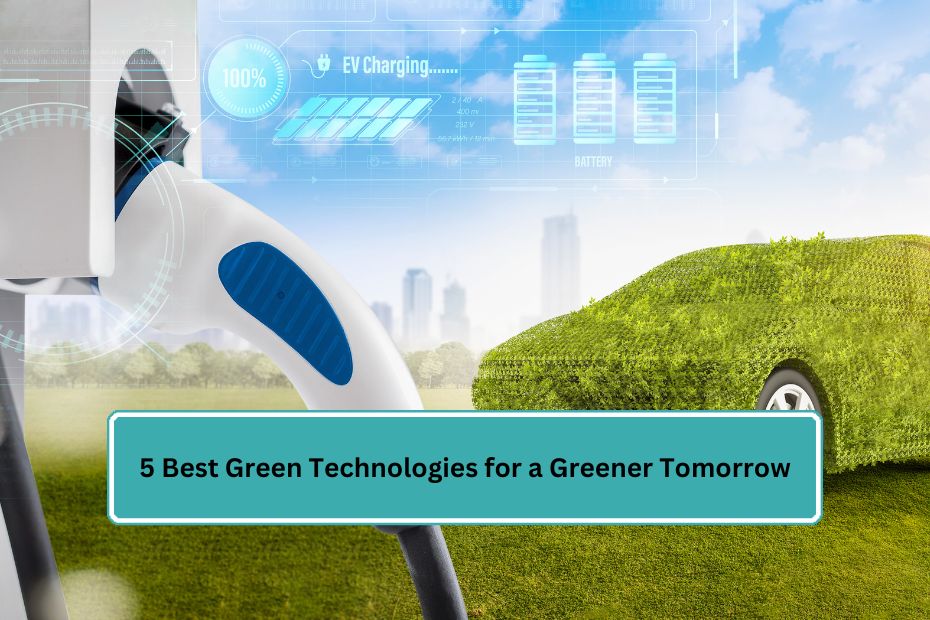Climate change and environmental degradation have become pressing issues in today’s world, prompting a shift towards more sustainable practices and technologies. In this article, we’ll explore five of the best green technologies that offer promising solutions for a greener tomorrow.
As the global population continues to grow, the demand for energy has skyrocketed, leading to increased carbon emissions and environmental damage. To combat these challenges, innovative green technologies have emerged, offering alternative solutions that prioritize sustainability and reduce our carbon footprint.
Solar Power
Solar power is one of the most well-known and widely adopted green technologies, harnessing the energy of the sun to generate electricity. Solar panels, made up of photovoltaic cells, convert sunlight into electricity, providing a clean and renewable energy source. With advancements in technology and decreasing costs, solar power has become more accessible to homeowners, businesses, and communities worldwide.
Wind Energy
Wind energy is another prominent green technology that utilizes the power of the wind to generate electricity. Wind turbines, strategically placed in windy areas such as coastlines and open plains, capture kinetic energy from the wind and convert it into electrical power. Wind energy is abundant, renewable, and emissions-free, making it a sustainable alternative to fossil fuels for electricity generation.
Hydroelectric Power
Hydroelectric power, generated from flowing water, is one of the oldest and most reliable forms of renewable energy. Hydroelectric dams harness the energy of flowing water to spin turbines, which generate electricity. Unlike fossil fuels, which emit greenhouse gases and contribute to climate change, hydroelectric power is clean and renewable, with minimal environmental impact when properly managed.
Electric Vehicles
The transportation sector is a significant contributor to greenhouse gas emissions, making the transition to electric vehicles (EVs) crucial for reducing carbon emissions and combating climate change. EVs use electric motors powered by batteries, eliminating the need for gasoline and reducing tailpipe emissions. With advancements in battery technology and the expansion of charging infrastructure, electric vehicles offer a sustainable and environmentally friendly alternative to traditional gasoline-powered cars.
Energy-Efficient Buildings
Energy-efficient buildings are designed to minimize energy consumption and maximize sustainability. Features such as high-efficiency insulation, LED lighting, and smart thermostats help reduce energy waste and lower utility bills. Additionally, renewable energy systems such as solar panels and geothermal heating further enhance the sustainability of energy-efficient buildings, creating comfortable and environmentally friendly living and working spaces.
Conclusion
As we strive towards a greener tomorrow, embracing innovative green technologies is essential for reducing our environmental impact and creating a sustainable future. From solar power and wind energy to hydroelectric power, electric vehicles, and energy-efficient buildings, the possibilities for a greener tomorrow are limitless. By adopting these technologies and investing in sustainable practices, we can protect the planet for future generations and ensure a brighter and more sustainable future for all.
FAQs:
1. Are solar panels worth the investment?
Yes, solar panels can be a worthwhile investment, as they can significantly reduce or even eliminate electricity bills over time, while also reducing carbon emissions and contributing to a greener environment.
2. How reliable is wind energy as a source of electricity?
Wind energy is a reliable and consistent source of electricity, especially in areas with consistent wind patterns. While wind energy generation may fluctuate based on weather conditions, advancements in technology have made wind turbines more efficient and reliable than ever before.
3. Can hydroelectric power be used to generate electricity on a small scale?
Yes, hydroelectric power can be used to generate electricity on both small and large scales. Micro hydroelectric systems can harness the power of small streams or rivers to generate electricity for individual homes or communities, providing a sustainable and renewable energy source.
4. How long do electric vehicle batteries last?
The lifespan of electric vehicle batteries varies depending on factors such as usage patterns, charging habits, and environmental conditions. However, modern EV batteries are designed to last for many years, with warranties typically ranging from 8 to 10 years or more.
5. What are the benefits of living or working in an energy-efficient building?
Energy-efficient buildings offer numerous benefits, including lower energy bills, improved indoor comfort, reduced environmental impact, and increased property value. Additionally, energy-efficient buildings contribute to a healthier and more sustainable living environment for occupants.
